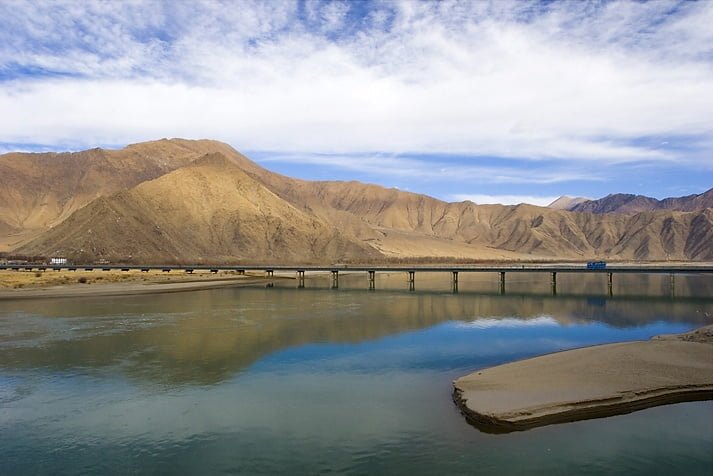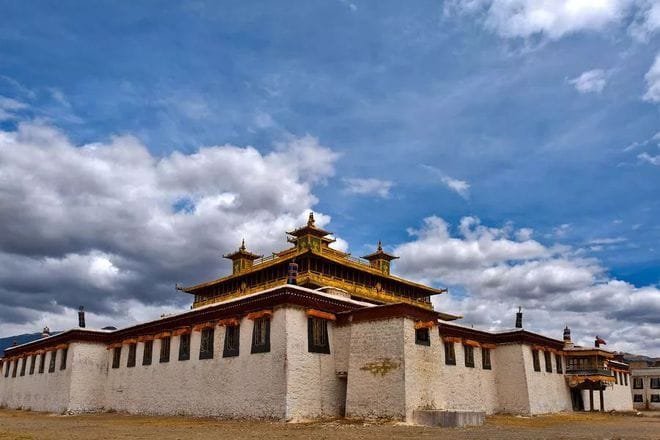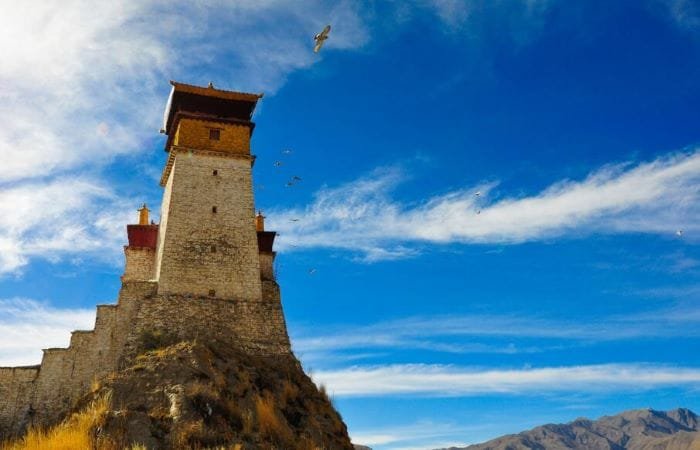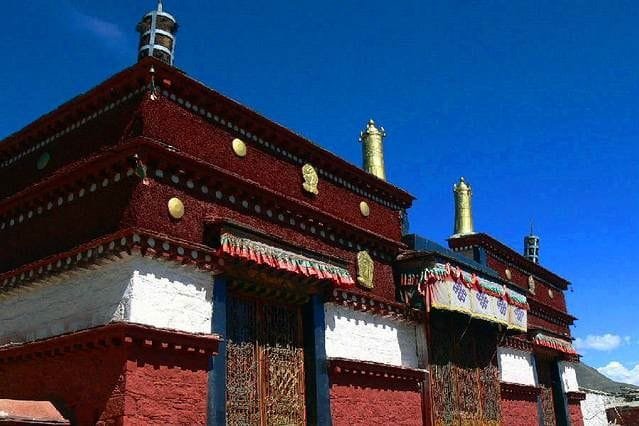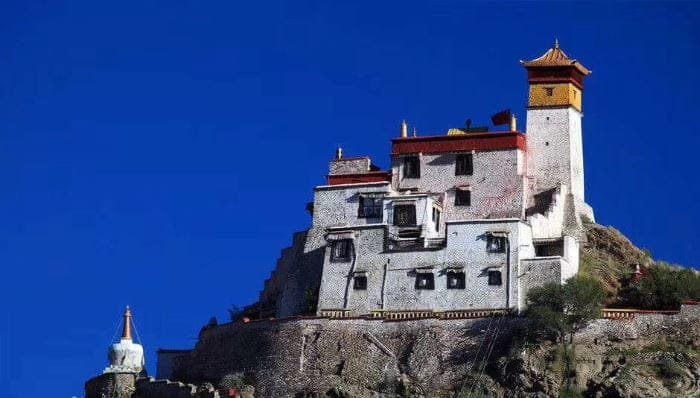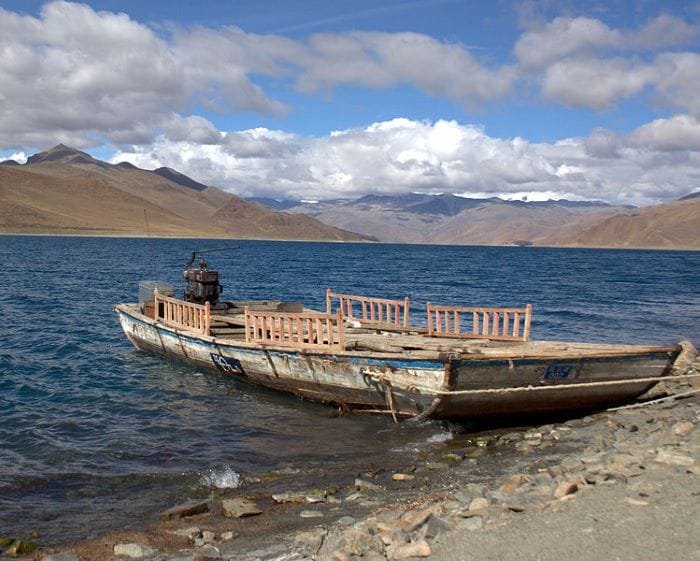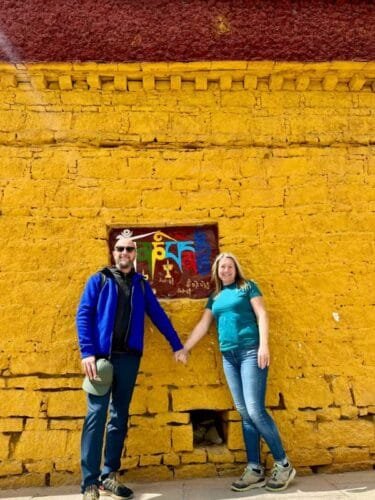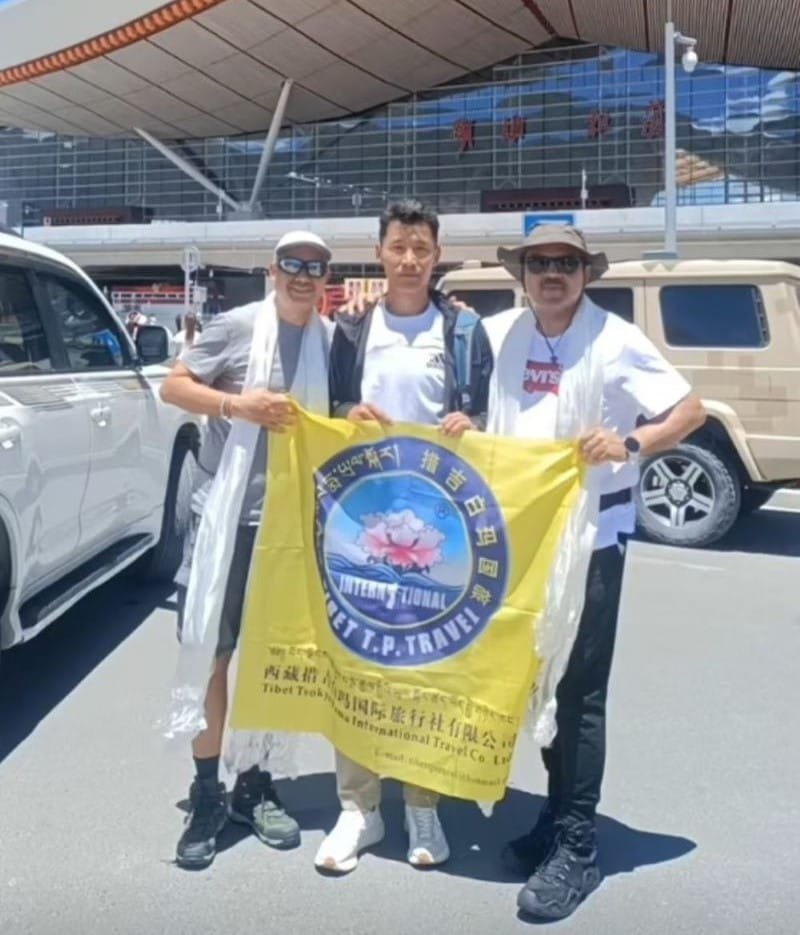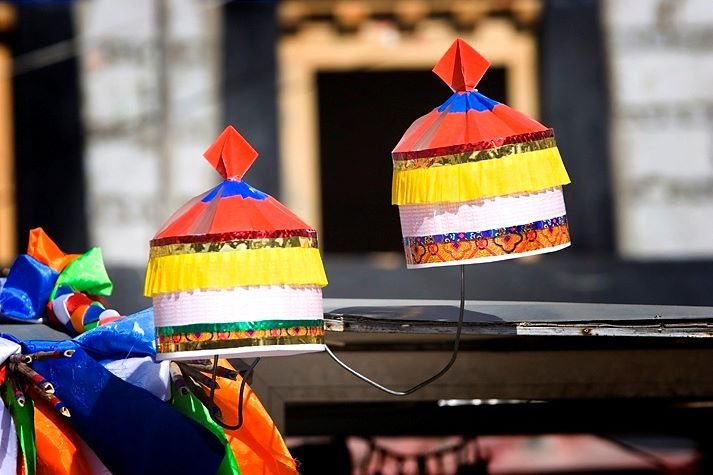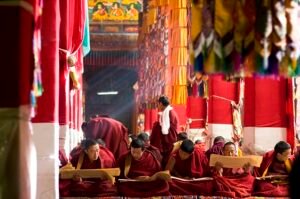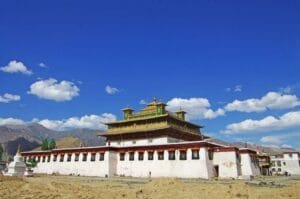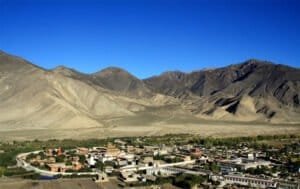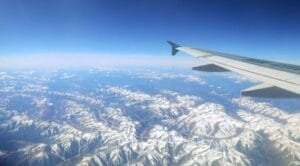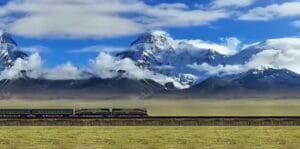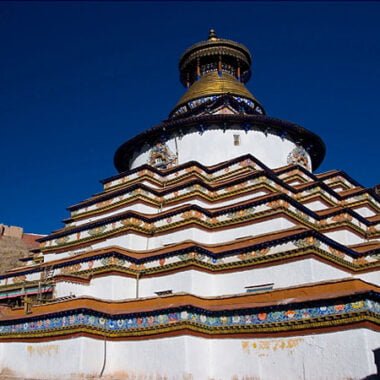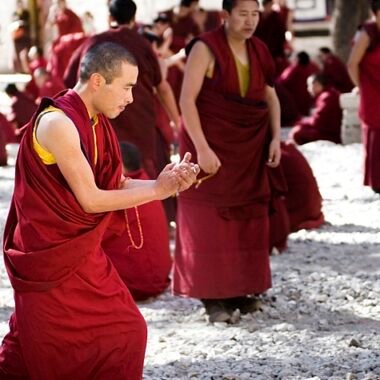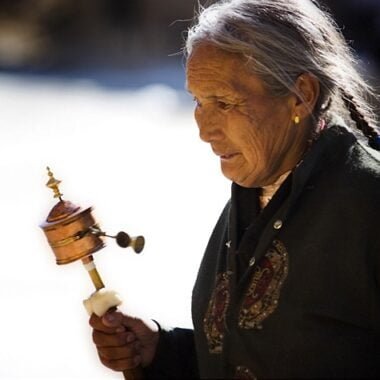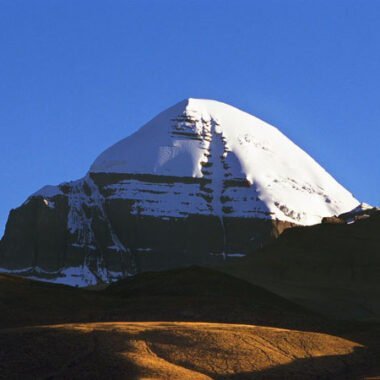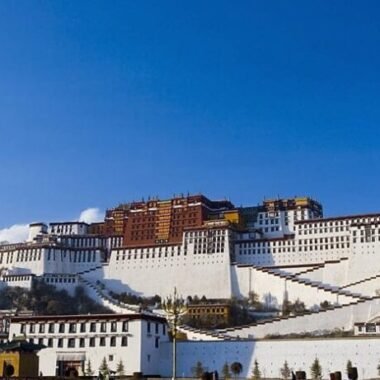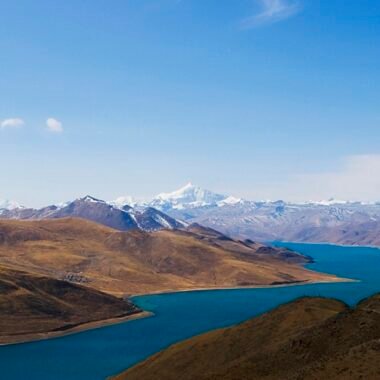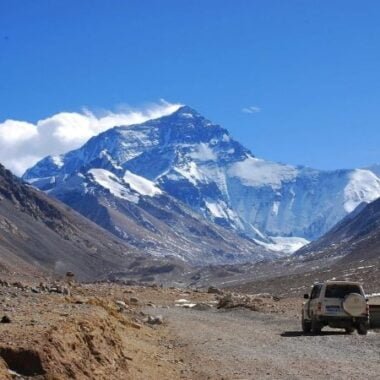5-Day Lhasa – Samye Monastery (Tsedang, Shannan) Tour
$729.00 excluding flights & trains to/from Lhasa
✔ Customized Itinerary
✔ Private Transportation, Travel at Your Own Pace
✔ One-on-One Service from a Professional Tibetan Guide
✔ Complete Privacy, Comfortable and Convenient
✔ Flexible Travel Dates that work best for you
✔ Free Upgrade of Accommodation whenever possible
+ Small Group Tour Options Available
Lhasa – Samye Monastery (Tsedang) – Lhasa
Any Group Size are welcome, starting from just 1 person
Overview
This 5-day Lhasa to Tsedang tour offers an immersive experience into the spiritual and historical essence of Tibet. Starting from Lhasa, the vibrant capital and spiritual center of Tibet, you will explore iconic sites such as the Potala Palace, Jokhang Temple, and Barkhor Street. The journey then continues to Tsedang, the birthplace of Tibetan culture, where you will visit the first Buddhist monastery in Tibet, Samye Monastery, and the ancient Yumbulakang Palace.
Highlights
- Marvel at the iconic Potala Palace and the revered Jokhang Temple, both UNESCO World Heritage Sites, rich with history and culture.
- Visit Drepung Monastery, the largest monastery in Tibet, to uncover the peaceful routines and spiritual practices of Tibetan monks.
- Experience the lively monk debates at Sera Monastery, a unique glimpse into Tibetan Buddhist traditions.
- Wander through the vibrant Barkhor Street, soaking in the atmosphere of Lhasa’s ancient charm and spiritual energy.
- Visit Samye Monastery, renowned as Tibet’s first Buddhist monastery, uniquely housing the three Buddhist jewels—Buddha, Dharma, and Sangha—making it a significant cultural and spiritual landmark.
- Connect with the local culture by exploring traditional homes, bustling teahouses, and joining Tibetans in their devotional activities such as the kora around Jokhang Temple.
Itinerary
Your Tibetan adventure begins with a warm greeting from your local guide, who will welcome you in traditional Tibetan style by presenting you with a Hada (a ceremonial Tibetan scarf).
You’ll then be escorted to your hotel in Lhasa in the comfort of a private vehicle. Along the way, follow the serene Kyichu River, where you’ll pass Tibetan homes adorned with trapezoid-shaped windows and fluttering prayer flags. Locals in their distinctive traditional attire can often be seen walking along the roadside.
Take a short stop near Nietang Buddha, an impressive centuries-old Buddha statue carved into a stone cliff face. As you approach Lhasa, you’ll catch your first glimpse of the magnificent Potala Palace, perched majestically on a hill and dominating the cityscape.
After arriving at your hotel, rest and allow your body to acclimate to the high altitude. Take it easy on your first day, stay hydrated, and enjoy the serene atmosphere.
Optional: Depending on your flight time or your acclimatization, this evening, you can take a peaceful stroll around the tranquil Dragon King Pond Park, a hidden gem near the Potala Palace. It’s a serene place where locals come to relax, surrounded by fluttering prayer flags and birds circling overhead. The pond offers a unique vantage point to photograph the Potala Palace from a different angle, bathed in the golden hues of sunset.
Tips: When you first arrive in Lhasa, we kindly suggest skipping the shower if you can, and taking it easy. During the whole trip, always walk slowly, drink plenty of water, and keep a calm and positive mindset. Remember to respect local customs and soak in the incredible beauty of this sacred plateau. Doing so will make your journey in Tibet feel even more comfortable, special and memorable.
Overnight Hotel in Lhasa
This morning, we’ll start our exploration of Lhasa from the iconic Potala Palace, often called the “golden crown of the Roof of the World.” Visible from afar, its golden roofs shimmer in the sunlight. Spend about an hour exploring its grand interior, including the Dalai Lama’s former chambers and an impressive array of Buddhist relics and artifacts.
In the afternoon, tour the sacred Jokhang Temple, a spiritual heart of Tibetan Buddhism. This architectural masterpiece houses numerous chapels dedicated to enlightened beings, protectors, and high lamas. The temple walls and ceilings are adorned with vibrant paintings, intricate patterns, and silk banners, creating a kaleidoscope of color. At its center stands a stunning 30-foot gilded statue of Maitreya Buddha.
Then continue your exploration by a clockwise kora around the temple on the historic Barkhor Street, filled with the scent of yak butter and incense. Afterward, enjoy the Tibetan sweet tea at a cozy local tea house. The warm atmosphere, decorated with traditional Tibetan decor, invites you to unwind and soak in the local culture.
Overnight Hotel in Lhasa [B]
After breakfast, visit Drepung Monastery, once the largest monastery in Tibet, housing over 10,000 monks. From a distance, its grand white buildings resemble a heap of rice, which inspired its name, meaning “Monastery of Collecting Rice” in Tibetan. Explore its fascinating history and gain insight into the lives of Tibetan monks.
In the afternoon, head to Sera Monastery, founded in 1419 and renowned as an important Buddhist seminary. The monastery’s gardens are filled with wild roses, earning it the nickname “Court of Wild Rose.” Enjoy a scenic hike in the surrounding valley before witnessing the famous monks’ debate (held daily from 3:00 PM to 5:00 PM). This spirited exchange of Buddhist philosophy is a highlight of the visit.
We’ll end the day with a visit to a Tibetan family, sharing stories, exploring local customs, and embracing a unique culture.
Overnight Hotel in Lhasa [B]
Today, we will visit Samye Monastery, the first Buddhist monastery in Tibet, located in Tsedang area of Shannan Prefecture. It holds the distinction of being the first to house the three Buddhist jewels: Buddha, Dharma, and Sangha. With its unique history and remarkable features, this magnificent temple has become a popular attraction for visitors from around the world.
After the sightseeing, we’ll return to Lhasa, leaving you with some leisurely free time to unwind. Take a peaceful stroll through Barkhor Street once again, bask in the serene sunset, or simply enjoy a warm cup of coffee or Tibetan tea. This leisure time offers the perfect opportunity to savor the calm, timeless beauty of the holy city before you depart, leaving you with lasting memories of Tibet’s gentle charm.
Overnight Hotel in Lhasa [B]
Price Details
Include:
- Accommodation at 3-star* standard hotels in Lhasa and Shigatse, guesthouse or tent near Mt. Everest Base Camp
- Breakfasts included in hotels
- One private vehicle and one experienced driver throughout the tour
- A Professional Tibetan English-speaking tour guide
- All necessary Tibet travel permits
- Entrance tickets to all listed attractions
- Tourist accident / casualty insurance
- Service charge and government tax
- Oxygen for emergency use
- Bottled mineral water
*We offer a free upgrade to 4-star hotels in Lhasa and Shigatse when available.
Not Include:
- International and domestic flights / trains
- Meals not listed in the itinerary
- Tips for guide and driver
- Personal expenses like souvenirs, snacks, drinks etc.
- Other expenses not mentioned in the above including list.
Our Services Guarantee:
We pride ourselves on transparency. There are no hidden fees or surprise charges during your trip.
If you need to cancel your trip for any reason, we offer a full refund if the cancellation is made at least 3 months before the departure date.
As a trusted and experienced travel company, we have no difficulty in obtaining all the necessary Tibet travel permits for you. We guarantee that there will be no failure in securing your permits due to any fault on our part. Rest assured, you won’t need to worry about any documentation from our side.
Whenever possible, we strive to offer complimentary hotel upgrades to enhance your comfort and overall experience.
We ensure that all transportation, accommodations, and activities meet the highest safety and health standards in Tibet, including measures for altitude sickness prevention.
Your tour guide and driver will be available 24/7 for support and assistance during the whole trip.
Travel Notes and Tips
The optimal time to visit Lhasa and Samye Monastery is between April and October. During this period, the weather is pleasant with moderate temperatures and abundant oxygen, making it the most ideal for travel. Specifically, April to May and September to October are considered the best months for a visit.
Although July and August are the rainy season, it’s also the peak tourist period. Rain typically occurs late in the evening or overnight, and does not usually interfere with daytime activities.
If you’re looking for a more budget-friendly option, consider visiting during the winter months (November to March). While temperatures can be lower, days are mostly sunny, with temperatures above 10°C, and although it may freeze at night, you’ll be back in the warmth of your hotel. Winter offers the added advantage of lower travel costs, with discounts on flights and hotels, and many scenic spots offering free admission. Plus, fewer tourists mean you can enjoy a more peaceful experience without the crowds.
Lhasa is situated at an altitude of 3,650 meters and Samye Monastery at 3,600 meters, making them among the lower-altitude places in Tibet (Lhasa is the second city only to Nyingchi). While altitude sickness is a possibility for first-time visitors to high-altitude areas, its severity can vary from person to person.
To minimize the risk of altitude sickness, it’s recommended to avoid activities like bathing (especially washing your hair) during the first few days in Lhasa, protect yourself from cold weather to avoid catching a cold, and take plenty of rest. It’s also important to avoid intense physical activity or overexertion. Additionally, staying hydrated, eating fresh fruits and vegetables, and refraining from alcohol are all helpful. If you experience severe symptoms such as shortness of breath, chest tightness, or severe headaches, notify your guide immediately and seek medical attention with their assistance.
The following documents are required for foreign tourists to travel to Tibet: Passport, Chinese Visa, Tibet Travel Permit (also called Tibet Entry Permit, which will be required for boarding the train / flight to Lhasa), and Alien’s Travel Permit (which is usually handled after you arrive in Tibet with your original passport).
Note: Tourists from HongKong, Macau and Taiwan needs different travel documentation. Please feel free to contact us for more info.
It is necessary to provide photos or photocopies of your valid passport and Chinese Visa to apply for the Tibet Travel Permit. Those on a working visa need to include a work certificate, while student visa holders must provide student documentation. Taiwanese tourists only need photos or photocopies of their Mainland Travel Permit. The permit processing generally takes 7-14 working days, and once approved, we’ll send it to your address in mainland China (such as your hotel address) 3-5 days before your trip. You’ll need to show this permit for boarding the flight / train to Lhasa.
Accommodation in Tibet may not always match the luxury found in China’s coastal or central regions, but there is a wide variety of options to suit all preferences. In larger cities like Lhasa and Shigatse, you can choose from budget-friendly, clean youth hostels to charming Tibetan-style 3-star hotels and international 5-star luxury resorts. In more remote areas, such as the Everest Base Camp or Mount Kailash, accommodations are more basic. Some may offer air conditioning, while others provide only electric blankets in guesthouses. However, we carefully select safe and comfortable accommodations along your itinerary to ensure you have a pleasant stay during your Tibet journey.
Our English-speaking guides are all local Tibetans with extensive knowledge of Tibetan culture, history, and Buddhism. They are trained to provide Western-standard service, ensuring that your experience is both enriching and comfortable. We also closely monitor your health throughout the tour and are always available to assist you should you need any help.
Tipping your Tibetan guide and driver is a common way to show appreciation for their excellent service, similar to the practice in Western countries. A typical tip is around 7-15 USD per day for the guide and driver together, though this is always at your discretion. The general rule is to reward good service with fair compensation.
- Clothing: Bring thermal underwear, warm sweaters or fleece, and a thick down jacket. Windproof pants and thermal leggings are advisable. Sturdy hiking boots, scarves, gloves, and hats are essential for layering.
- Personal Items: Include skincare products (cleanser, moisturizer, lip balm, sunscreen), hygiene essentials (toothpaste, toothbrush, towel), and sunglasses for sun protection. A U-shaped pillow can add comfort during long travels, along with a thermal flask for hot water.
- Common Medications: Pack band-aids, motion sickness tablets, cold remedies, gastrointestinal aids, altitude sickness medication, and any personal prescriptions.
- Electronics: Bring chargers, power banks, cameras, and earphones as needed.
- Cash and Cards: While mobile payments are growing, having some cash and a bank card is wise for purchases in more remote areas.
For many Western travelers, using toilets in Tibet may present a challenge, so it’s important to set realistic expectations. On trains traveling to Tibet, you will find both Western-style and squat toilets. In cities like Lhasa and Shigatse, hotels with a 3-star rating or higher generally offer standard Western flush toilets for your comfort.
However, in more remote areas, such as Yamdrok Lake, Namtso, or Everest Base Camp, you may encounter basic pit toilets that can be unpleasant and unclean. It’s a good idea to carry your own toilet paper and be prepared for these situations.
Photography is generally not allowed inside monasteries. If you wish to take photos of Tibetan pilgrims, always ask for their permission or take photos from a respectful distance. Swimming and fishing are prohibited in Tibet’s sacred lakes, and sensitive topics like politics should be avoided during conversations.
When walking around Barkhor Street, remember to follow the tradition of walking clockwise. Also, refrain from exploring unfamiliar trails and do your part to protect Tibet’s fragile environment.
Since Tibetan Buddhism plays a significant role in the lives of Tibetans, it’s essential to show respect for their customs and practices. If you’re unsure about any traditions or rituals, ask your guide for advice before proceeding.

